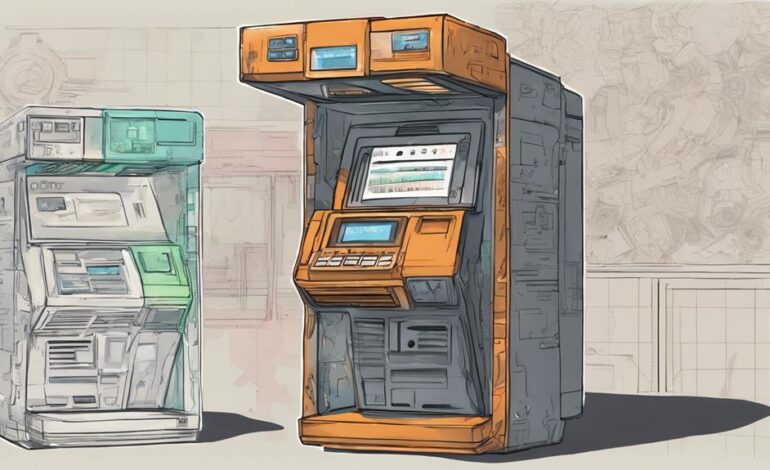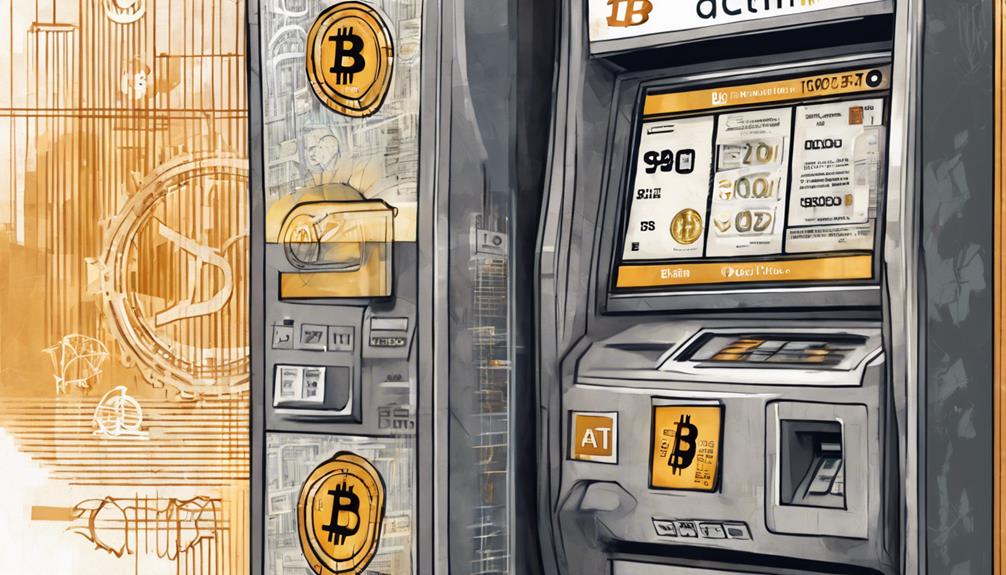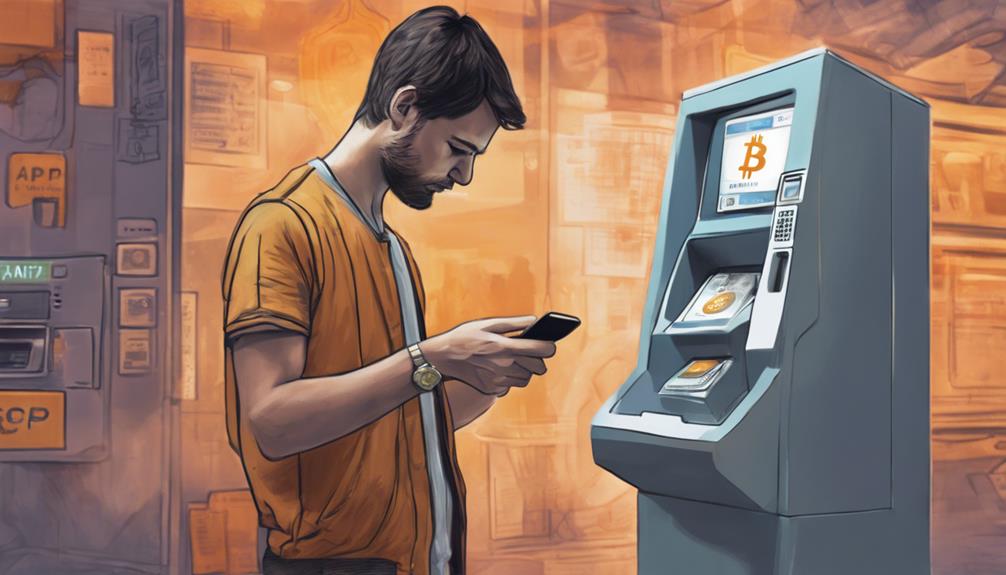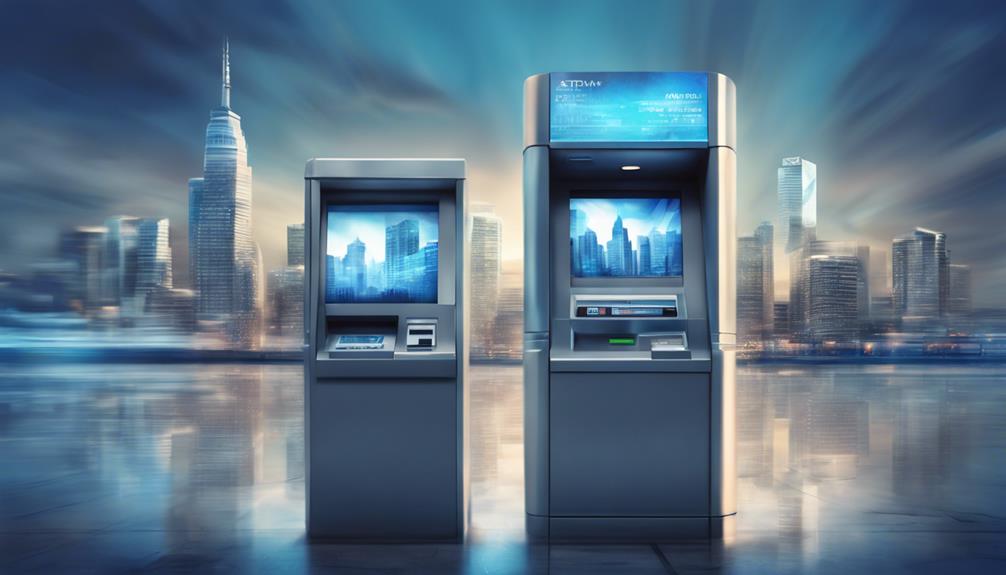What Is Bitcoin Atm Limit

When you use a Bitcoin ATM to purchase or withdraw cryptocurrencies, there are limits to how much you can do in one go.
These daily limits, ranging from $3,000 to $10,000, vary globally and are set by both the ATM operators and government regulations.
Whether you're buying Bitcoin to invest or sell cryptocurrencies for cash, understanding how these limits work and what affects them is crucial to manage your transactions efficiently.
Entities:
- Bitcoin ATM – A machine that enables users to purchase or withdraw cryptocurrencies.
- Daily Limits – Maximum amounts that can be transacted within a 24-hour period.
- ATM Operators – Companies responsible for managing and setting limits on their Bitcoin ATMs.
- Government Regulations – Laws and policies that govern Bitcoin ATM transactions.
- Bitcoin – A cryptocurrency.
- Cryptocurrencies – Digital currencies like Bitcoin used for transactions.
How Bitcoin ATM Limits Work

How Bitcoin ATM Limits Work
Bitcoin ATM limits, which vary globally but typically range from $3,000 to $10,000 per transaction and have different daily limits based on both the operator and jurisdiction, are designed to manage practical and security considerations as well as compliance with anti-money laundering regulations, thereby ensuring secure and smooth transactions.
Operators must comply with anti-money laundering regulations, maintaining robust AML programs to prevent illicit activities.
These restrictions protect both operators and users. By setting daily limits, operators prevent long lines and potential floor malfunctions.
Each jurisdiction and operator sets unique limits, sometimes offering higher limits with enhanced KYC procedures.
If users provide supplementary identification like a passport or driver's license and receive a one-time passcode for verification, they might be able to withdraw up to $125,000 in some cases.
The future of Bitcoin transactions depends on maintaining a balance between ease of use and stringent security.
Bitcoin ATM Withdrawal Limits
Bitcoin ATM withdrawal limits significantly vary globally, ranging from $299 without KYC verification in the USA to €2,000 – €3,000 in Europe, with strict regulations and regulatory uncertainty in the UK.
These limits are set to balance security measures and ease of use.
USA
In the USA, you can generally withdraw up to $299 without undergoing KYC verification.
For higher limits, you'll need to undergo enhanced KYC verification, which can allow you to withdraw up to $125,000.
Canada
Canada follows a similar pattern, with the most common Bitcoin ATM withdrawal limits ranging from $5,000 to $10,000.
It is essential to be aware of these limits to avoid any complications when using Bitcoin ATMs.
Proper optimization of withdrawal limits not only ensures security but also helps in managing cash replenishments and reducing operational costs.
Always check the specific limits for each Bitcoin ATM location to ensure a smooth transaction process.
Factors Affecting Transaction Limits

By operating within specific regulatory parameters, your cash transactions at Bitcoin ATMs are greatly influenced by financial regulatory bodies like FinCEN.
These organizations oversee anti-money laundering (AML) compliance and set strict guidelines to prevent illegal activities, such as structuring transactions to evade reporting requirements or the filing of Suspicious Activity Reports (SARs).
Your Bitcoin ATM limit is directly impacted by these regulations, which affect daily transaction limits, Know Your Customer (KYC) verification, and withdrawal amounts.
Bitcoin ATM operators ensure regulatory compliance by setting limits to maintain liquidity, monitor cash flow, and avoid unnecessary security risks.
Compliance officers work to prevent fraudulent transactions and potential losses.
However, this means you may encounter limitations like smaller withdrawal amounts or additional KYC verification steps.
When using a Bitcoin ATM, you should expect daily limits between $1,000 to $10,000, although some operators may allow larger transactions with enhanced verification.
Knowing these constraints helps you plan and optimize your cash transactions.
Common Bitcoin ATM Fees Rates
Common Bitcoin ATM Fees Rates
In addition to daily limits, understanding fees associated with using Bitcoin ATMs is critical to making informed transactions, as operators may impose various charges based on your activity level and transaction amount.
These fees can vary depending on the Bitcoin ATM provider, location, and the size of your withdrawal or purchase. Some common fees include:
Transaction Fees: Operators, such as CoinFlip and Byte Federal, charge fees for processing transactions. These fees are often a percentage of the transaction value, such as 4.99% to 25%.
KYC Verification Fees: To comply with regulatory requirements, ATMs, like those regulated by the Financial Crimes Enforcement Network (FinCEN), may charge for KYC verification. This could include the cost of providing government-issued identification.
Security Fees: Bitcoin ATMs, like CoinTime, have additional security measures to protect against fraudulent activities, which may come at a cost. This includes costs related to hardware, internet access, and secure cash transport and maintenance.
Withdrawal Fees: Many ATMs, such as those by CoinFlip, charge a flat fee for withdrawals, like $4.99 or $1.5, which might vary based on the cash amount.
Crypto Network Fees: Operators often pass on cryptocurrency network fees to you for each transaction, ranging from $1 to $3.
Daily Limit Fees: Exceeding the daily purchase or withdrawal limit may incur additional fees, which vary by provider.
An awareness of these fees will help you plan and manage your Bitcoin transactions more effectively, ensuring a smooth and secure experience.
Avoiding Withdrawal Limit Constraints

Avoiding Withdrawal Limit Constraints
To deal more flexibly with your Bitcoin transactions, consider several strategies that help bypass common withdrawal limit constraints. It's no mystery that managing withdrawal limits can be crucial for users and operators alike.
If you're looking to break free from these constraints, one of your first steps can be to increase your Know Your Customer (KYC) verification level by contacting the Bitcoin ATM vendor directly. This can open up higher withdrawal limits that make your transactions more fluid.
Another approach is to find a nearby Bitcoin ATM operator that offers higher withdrawal limits. You may be surprised to find operators offering limits as high as $125,000 in the USA.
Some Bitcoin ATMs, like Coinhub, boast a daily purchase limit of $25,000. Notable operators like Bitcovault ATMs offer a substantial cash withdrawal limit of $8,000, helping to reduce the need for frequent refills and minimize cash handling errors.
Some ATMs, like CoinTime, offer daily limits of up to $50,000 if pre-registered, catering to users who require these higher limits.
Frequently Asked Questions
Can I Send $10,000 Through Bitcoin Atm?
Yes, you can send $10,000 through a Bitcoin ATM, depending on the operator's limits, some of which allow up to $10,000 daily, and a few even offer higher limits with enhanced KYC verification. For example, CoinTime ATMs allow a daily limit of $50,000. Always check the specific ATM provider's limits before use.
What Is the Maximum Withdrawal From a Bitcoin Atm?
At Bitcoin ATMs, you'll generally find maximum withdrawal limits benefiting from the safety of regulation, varying from $3,000 to $10,000. You might find higher limits depending on enhanced KYC (Know Your Customer) verification and specific operators.
What Is the Highest Limit on Bitcoin Atm?
Your daily limit at most Bitcoin ATMs usually ranges from $2,500 to $8,000, but some high-end operators like Coinhub and CoinTime offer significantly higher limits up to $25,000 or even $50,000.
How Much Can I Deposit at a Bitcoin Atm?
You can typically load up to $10,000 into your digital wallet at a Bitcoin ATM, while some operators offer higher limits with enhanced Know Your Customer (KYC) verification.
Conclusion
To master Bitcoin ATMs, understand the daily transaction limits, such as Bitcoin ATM limits, set by operators and governed by anti-money laundering regulations, which protect users from fraud and ensure machine liquidity.
These limits typically range from $3,000 to $10,000.
Be aware of local regulations, such as those in California, Connecticut, and other states.
Operator differences and necessary Know Your Customer (KYC) verification procedures must also be considered to maximize your transactions.





